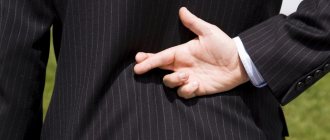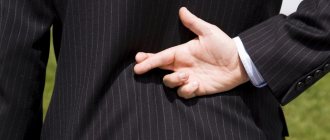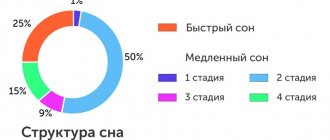- September 9, 2018
- Psychology of communication
- Raisa Bogacheva
Most of humanity tries to tell the truth, but there are people who sometimes lie, and there are those who do it all the time. What do you call people who lie? It is clear that not in very good words.
Sometimes a person lies to protect someone. Even after meeting people, after a few minutes they begin to lie to each other. Every day a person hears from several dozen to several hundred deceitful phrases and sees several thousand deceitful movements. Everyone is very interested in the question of why people lie. Psychology gives the following answers.
Why do people lie
If a person constantly lies, the psychologist’s answer is the following: he creates an image for himself. That is, they talk about some adventures or exploits in order to appear in the eyes of the listener in a better and brighter light. They make up stories or exaggerate their abilities to make people think how wonderful they are. There are people who lie just like that, without any reason, simply because they like it. Some people may lie to unsettle their interlocutor. Other people lie to protect relationships or feelings.
For example, if a spouse cheated, he will lie to save the family and relationship. Or he will praise his wife for her new blouse, even if he doesn’t like it, just so as not to upset his beloved. Sometimes a person lies to protect another person from some consequences.
For example, if a child faces legal liability, then the parents will protect him, even if he is guilty, so that the life of their child is not ruined. Sometimes such a lie is justified, because it helps to avoid an unnecessarily severe punishment. There are people who lie for the sake of their own reputation and in order to impress.
For example, they lie about their financial situation in order to arouse interest in their personality, or exaggerate their work opportunities in order to get a good job. They resort to this form of lying in order to get career growth, a higher salary, for some kind of self-interest. Some liars lie to avoid some kind of conflict situation. For example, children may tell lies to avoid punishment or fear disapproval.
What do men lie about?
A small lie at the beginning of a relationship is not considered a disaster. Rather, it speaks of increased interest on the part of the partner. He strives to appear better than he really is. Wants to impress and charm.
However, systematic lies are already a problem. Which needs to be fought. Well, or pass by. Problems and men.
The basis of a man's lies is always his dissatisfaction. By yourself, a woman, work or life in general.
Psychologists identify several of the most common reasons for lying “like a man.”
- The inner child who never grew up
Influence on others
Some liars lie to somehow influence others. They think that deception sounds more reliable than the truth, and thanks to this they control the situation.
When a person begins to lie systematically, he can no longer stop; lies give rise to new lies. And the more he lies, the harder it is for him to tell the truth. Pathological liars think that if they admit that they once distorted the facts, then they will be exposed and the whole truth will be known. Fearing this, they continue to lie even where it is not necessary. In stressful situations, a person does not think about little things and to save himself, he begins to lie and believes it himself. It is more profitable for him to lie and believe than to tell the truth.
Sometimes people who lie a lot engage in wishful thinking. It seems to them that dreams can become reality if they just exaggerate a little and throw dust in the eyes of others. Whatever the reason for the deception, the person feels awkward at this moment. And the reaction of the interlocutor is very important, who may say “I don’t believe it” or “stop making up things.” The liar will then lie even more to protect his reputation and show that he is telling the truth.
Paul Ekman. Psychology of lies. Fool me if you can
Is it true that the average person today lies three times in a ten-minute conversation? How to react to the fact that lies have penetrated into all spheres of human life? What to do if you can’t recognize a lie from words and voice? In the book “The Psychology of Lying” by Paul Ekman you will find comprehensive answers to these questions. Remember that it is extremely difficult to hide deception. Universal microexpressions and microgestures always reveal a liar, regardless of social status and nationality. Learn to notice what others don't see.
See also. Allan Pease. Body language.
Paul Ekman. Psychology of lies. Fool me if you can. – St. Petersburg: Peter, 2021. – 304 p.
Download abstract (summary) in Word or pdf format
Buy a book in Ozon or Labyrinth
Chapter 1. LIES. INFORMATION LEAK AND SOME OTHER SIGNS OF DECEPTION
I define lying, or deception, as the act by which one person misleads another, deliberately, without prior notice of his purpose, and without the express request of the victim not to reveal the truth. There are two main forms of lying: omission and distortion. With omission, a liar hides true information but does not report false information. When distorting, the liar takes some additional actions - he not only hides the truth, but also provides false information in return, passing it off as true. Often it is only a combination of omission and distortion that leads to deception, but in some cases a liar can succeed simply by not telling the whole truth.
Deception is especially necessary when hiding emotions. The best way to hide strong emotions is a mask. And the best mask is a false emotion. But not every situation allows a liar to replace one emotion with another. For example, during a game of poker, a player who is dealt great cards and is excited about the prospect of winning a big pot must hide any signs of his excitement from other players. Masking a genuine experience with some other emotion is dangerous.
Any emotion can be used as a mask. Most often, a smile is used for this, which is the opposite of all negative emotions: fear, anger, grief, indignation, and the like. But intentionally portraying negative emotions is difficult for most people. The study found that most people cannot intentionally contract certain facial muscles to reliably simulate grief or fear.
There are two types of signs of deception. When a liar accidentally reveals himself, I call it a leak. When a liar is betrayed by his behavior, but the truth is not revealed, I call this information about the presence of deception.
Chapter 2. WHY LIES SOMETIMES FAIL
We are only interested in mistakes that occur directly in the process of deception, mistakes made by the liar against his will; we are interested in the lies betrayed by the behavior of the deceiver. Signs of deception can appear in facial expressions, body movements, voice modulations, swallowing movements, too deep or, conversely, shallow breathing, long pauses between words, slips of the tongue, microfacial expressions, inaccurate gestures.
The inability to foresee the need to lie, prepare the necessary line of behavior and adequately respond to changing circumstances, or adhere to the initially accepted line of behavior gives easily recognizable signs of deception. What a person says contradicts either itself or facts already known or that emerge later.
The inability to think through and rehearse a line of behavior in advance is only one of the reasons why mistakes are made that give signs of deception. Many more mistakes occur due to emotions, which are difficult to fake or hide.
The companions of a lie can be completely different emotions, but most often three of them are intertwined with deception - the fear of being exposed, the feeling of guilt about one’s own lies, and the feeling of delight that the deceiver sometimes experiences in case of success.
Information about the possible fear of detection in a liar can be a good help for the verifier. He will be much more alert to signs of fear if he knows that the suspect is very afraid of being caught.
Like the fear of discovery, a liar's remorse can give him away. Remorse can be of varying intensity. They can be so strong that the deception will fail because the feeling of guilt will provoke a leak of information or give some other signs of deception. When deciding to lie for the first time, people often do not imagine how much they will suffer from remorse later.
The feeling of shame is also closely related to guilt, but if remorse does not require an audience (in this case, a person is his own judge), then the feeling of shame requires disapproval or ridicule from others.
Lack of guilt or shame is considered a sign of psychopathy. But only if it applies to all or almost all areas of life. There is also disagreement between specialists about whether the lack of guilt or shame results from upbringing or hereditary factors. However, everyone is of the same opinion that if anything can betray a psychopath, it is not a feeling of guilt or fear of exposure.
Liars feel much less remorse when the targets of their deception are impersonal or unfamiliar. When the victim of deception is anonymous, it is much easier to indulge in all sorts of fantasies that reduce one’s own guilt, for example, imagining that it will not harm her at all and, perhaps, no one will even discover anything; or even better - that she herself deserved it or that she herself wants to be deceived.
In addition to the negative ones (fear of exposure and remorse), lying can also cause positive emotions. A liar may experience joyful excitement either from the challenge or directly in the process of deception, when success is not yet entirely clear. If successful, there may be pleasure from relief, pride in what has been achieved, or a feeling of smug contempt for the victim. People may admit to deception, wanting to share their delight with others.
Chapter 3. DETECTION OF DECEPTION BY WORDS, VOICE AND PLASTICS
People would lie less if they thought there were telltale signs of deception. But there are no signs of deception as such - there is not a single gesture, facial expression or involuntary muscle contraction that alone and in itself would mean that a person is lying. There are only signs by which we can conclude that the words are poorly thought out or the emotions experienced do not correspond to the words. These signs provide information leakage.
Detecting lies is not so easy. One of the problems is the collapse of information. There is too much information to consider at once. There are too many sources of it - words, pauses, the sound of the voice, facial expression, head movements, gestures, posture, breathing, perspiration, blush or pallor, etc.
Liars typically monitor, control, and hide not all aspects of their behavior. Liars hide and falsify only what they think others will observe most closely. Liars tend to choose their words especially carefully and watch their facial expressions.
It is easier to notice deception by facial expressions than by words. The face is directly connected to the areas of the brain responsible for emotions, but words are not. When something triggers an emotion, the facial muscles fire involuntarily. People who suspect their interlocutor is lying should pay more attention to their voice and body.
Words. Surprisingly, many liars are exposed by careless statements. Sigmund Freud, in The Psychopathology of Everyday Life, demonstrated that mistakes made in everyday life, such as slips of the tongue, misnaming, and mistakes made when reading and writing, are not accidental and indicate internal psychological conflicts. The verifier must be careful, since not every clause indicates deception. Some people, when they lie, do not give direct answers, are evasive, or give more information than required.
The voice is even more important than words in characterizing human speech. Here, the most common signs of deception are pauses. Speech errors can also be signs of deception: interjections, for example, “um”, “well” and “uh”; repetitions, for example, “I, I, I mean that I...”; extra syllables, for example, “I really liked it.”
If the purpose of lying is to hide fear or anger, the voice will be higher and louder, and the speech may be faster. Directly opposite changes in voice can reveal the feeling of sadness that the deceiver is trying to hide.
Our experiment with nursing students was the first to document changes in the pitch of a person's voice when lying. We found that deception increased the pitch of the voice. However, in general, raising the tone of the voice is not an indicator of lying; it is a sign of fear or anger and possibly excitement. A truthful person, fearing that they will not believe him, may raise his voice because of this, just like a liar who is afraid of being caught.
Not a single sign of deception is universal, but individually and in combination in most cases they can help the verifier.
Plastic. Body movements also provide information about hidden feelings. Shrugging and pointing a finger are examples of actions that are called emblems to distinguish them from all other known gestures. Emblems have very specific meanings that are known to everyone belonging to a particular cultural group. Everyone knows that an extended middle finger means “I had you” and that a shrug means “I don’t know,” “I can’t help it,” or “Who cares?”
A sign that the emblem is a “slip of the tongue” rather than an intentional action is that it is not performed in the usual position. Most emblems are displayed directly in front of the body, between the waist and neck area. In case of “reservations”, the emblem is never performed in the usual position (Fig. 1). Emblematic clauses can be trusted. They are genuine signs of involuntarily released information.
Rice. 1. Unintentional gesture - emblem
Illustration is another type of body movement that can be a sign of deception. However, if the number of emblematic clauses increases during the process of lying, the number of illustrations usually decreases. This type of body movement is so named because it illustrates speech.
David Efron, an Argentine Jew who studied at Columbia University with anthropologist Franz Boas, studied illustrations of people living on the eastern edge of New York. Efron demonstrated that the nature of the illustrations a person uses is not innate, but acquired. People from different cultures not only use different types of illustrations, but also with different degrees of intensity.
The nursing students in our experiment who tried to hide the reactions that a movie about amputations and burns evoked in them illustrated less than those who watched a movie about flowers and honestly described their feelings. This decrease in the number of illustrations occurred for at least two reasons: firstly, the students had no experience of lying of this kind and did not have time to prepare, and secondly, they had strong emotions: fear of exposure and disgust caused by the bloody film.
The next type of body movement is manipulation. Manipulation includes all those movements that are used to shake off, massage, rub, hold, pinch, pick, or scratch another part of the body. Although people think that increased manipulation is a reliable sign of deception, this is not true. Manipulation is at the edge of consciousness. No amount of effort can help most people give them up for long. People are accustomed to manipulation.
The autonomic nervous system (ANS) also produces certain changes in the body that are noticeable when emotions arise: changes in the frequency and depth of breathing, frequency of swallowing, and intensity of sweating. These changes that accompany the emergence of emotions occur involuntarily, they are very difficult to suppress, and for this reason they are quite reliable signs of deception. A lie detector measures these changes in the autonomic nervous system, but many of them are visible without the use of special equipment.
Most psychologists think that changes in the ANS depend on the strength of the emotion, and not on its nature. My research has shown that this is not the case.
Chapter 4. FAMILY SIGNS OF DECEPTION
A person is a very valuable source of information for a verifier, because he can lie, tell the truth, and do both at the same time. Usually a face carries two messages at once - what the liar wants to say and what he would like to hide.
Studies of people with various types of brain damage show convincingly that different areas of the brain are responsible for voluntary and involuntary facial expressions. Patients suffering from damage to certain areas, including the so-called pyramidal system, cannot smile when asked to do so, but smile in response to a joke or with joy. The involuntary expression of emotions on the face is the result of evolution. Some emotional expressions are universal, the same for all people, regardless of age, gender, racial and cultural differences.
Already in the first years of life, children learn to control their facial expressions, hiding true feelings and depicting emotions that they do not feel. Growing up, people become so accustomed to these facial rules that such expressions become a habit that is difficult to eradicate. Most people believe themselves to be able to detect falsehood in the face of another, but our research suggests that this is actually not the case. When a person lies, his most eloquent facial expressions, which you first pay attention to, turn out to be fake, and more subtle manifestations of insincerity and fleeting signs of hidden emotions usually go unnoticed.
Let's start with the most difficult source of information leakage: microexpressions. These manifestations provide a complete picture of hidden emotions, but they are so fleeting that they usually do not have time to notice them. The microexpression covers the entire face, but very briefly, occupying only a tiny fraction of the usual duration, and is difficult to notice. Rice. 2 shows an expression of sadness. This expression is easy to identify because it is "photographed". But if it flashes by in one twenty-fifth of a second and is replaced by another, as happens in life, it can easily be missed.
Rice. 2. Expression of sadness
Microexpressions appear in full quite rarely. Blurred expressions were much more common; a person manages to realize the appearance of this expression on his face and tries to remove it, sometimes covering it with another expression.
Not all facial muscles are equally easy to control. Some muscles “cannot lie,” that is, they are beyond a person’s control.
Another problem standing in the way of deciphering the correct facial expressions and other signs of deception is the acting technique, which allows one to imitate any feelings through facial expressions. Acting technique (also known as the Stanislavski system) teaches the actor to remember his own emotional experiences in order to subsequently reproduce them believably on stage. When an actor uses this technique, the expression on his face is not an imitation, but the result of reliving the emotion.
So far, I've talked about three ways information leaks: microexpressions, blurred expressions, and the so-called telltale signs of emotion that result from the work of difficult-to-control facial muscles. Most people believe that there is also a fourth source - the eyes. When a person looks away, this indicates the presence of certain feelings: moving down means sadness, to the side - disgust, down and to the side - guilt or shame. Eye blinking increases with emotional excitement. In addition, the pupils dilate, and this reaction, unlike the previous one, is not amenable to conscious control.
Blushing is considered a sign of embarrassment, as well as feelings of shame and possibly guilt.
In addition to the Stanislavsky technique, there are three more types of signs by which one can judge the falsity of a facial expression: asymmetry, duration and untimeliness of facial expression. With asymmetrical expression, the same emotion appears more strongly on one half of the face than on the other. Duration is the total length of a facial expression in time, from the moment of its appearance to its complete disappearance. Expressions lasting more than ten seconds are undoubtedly, and those lasting about five seconds are more likely to be false. Most sincere expressions are replaced much faster. Surprise that lasts no more than a second is very fleeting.
The untimeliness of facial expression in relation to speech, intonation and body movements is the third sign of insincerity of emotions. Let’s say a person feigns anger and says, “I’m fed up with your behavior.” If the angry expression appears later than the words, then most likely the anger is fake, since the real expression would appear either at the very beginning of the phrase, or even slightly before it.
A smile is different from all other expressions - it expresses joy using only one muscle, while other emotions require three to five. Only the zygomatic muscles give a natural, relaxed and joyful smile. No other muscles of the lower part of the face are involved in the expression of a sincere smile; in the upper part, the only noticeable change may be the tension of the muscles around the eyes.
There are a number of signs that distinguish a feigned smile, pretending to appear sincere, from a truly sincere one:
- A fake smile is more asymmetrical than a genuine one.
- A sincere smile is accompanied by movement of the muscles located around the eyes.
Chapter 5. BASIC ERRORS AND PRECAUTIONS
Liars are usually very good at deceiving most people. And errors in detecting lies suggest not only that a person believes the deceiver, but, what is much worse, that he does not believe the one who is telling the truth. Since there is no way to completely avoid errors in deception detection, every precaution must be taken to reduce the incidence of these errors as much as possible. And the first of these measures is to interpret behavioral signs as accurately as possible.
The second measure is to strive to understand as clearly as possible the nature of the errors that occur in the process of detecting lies. There are two types of such errors: disbelief in the truth and belief in lies. It is impossible to completely avoid both errors; the choice is only to prefer the least dangerous of them at the moment.
First, special attention should be paid to individual differences (the Brokaw trap of ignoring individual differences in human behavior). Errors in believing lies here occur because some people make no mistakes at all when they lie. These are not only psychopaths, but also born liars, as well as people who use the Stanislavsky system, and those who sincerely believe in their own lies. And the verifier must always remember that the absence of signs of deception is not yet proof of truthfulness.
To reduce the likelihood of errors associated with the Brokaw trap, one should strive to make judgments based only on changes in the suspect's behavior. The Brokaw Trap is less dangerous when interpreting the following four sources of information leakage: speech and emblematic slips, emotional tirades, and microexpressions. There is no need for comparison to evaluate them, because they have meaning in themselves.
Another equally serious source of anxiety leading to the commission of mistakes of not believing the truth is the mistake of Othello. It happens when the verifier does not believe the truthful, stressed person. Any of the emotions associated with lying and leading to information leakage can be experienced for other reasons when an honest person is suspected of lying. I called this the Othello error, because the scene from Shakespeare's tragedy is perhaps the most brilliant and best-known example of it. The Moor had just accused his wife of adultery with Cassio and demanded a full confession; otherwise he threatened with death for monstrous betrayal. Desdemona asks to bring Cassio so that he can testify to her innocence, to which her husband informs her that he has already killed him. Then she understands the hopelessness of her situation: it is impossible to prove innocence.
Othello believes that Desdemona's fear and suffering are a reaction to the news of her lover's death, and this only confirms his confidence. Othello does not understand that, being innocent, his wife can also show these same emotions: suffering and despair, due to his unbelief alone, due to the inability to justify himself and be afraid of inevitable death.
Othello's error is also an excellent example of how preconceived notions can create biased judgments in the verifier. Othello is, of course, an extreme example, but preconceptions very often lead to incorrect conclusions, causing the verifier to neglect considerations, possibilities, or facts that do not correspond to his already established point of view.
Distrustful people make terrible verifiers, subject to the errors of not believing the truth. Gullible people, as a rule, go to the opposite extreme and constantly make mistakes in believing lies, sometimes without even suspecting that they are being deceived.
In most cases, people tend to suspect deception because deception is the most impressive and convenient explanation for a mysterious and perplexing world. Once someone believes that their child, father, friend or partner has lost their trust, the mistakes of not believing the truth become almost inevitable; deception is suspected anywhere and everywhere, because man tries to explain the inexplicable. Because, once a preconceived opinion has arisen, it begins to methodically cut off all information that could refute it.
The verifier must strive to be clearly aware of the possibility of his own biased attitude towards the suspect. The verifier must never forget the possibility that the emotion is not a sign of deception, but only a reaction to suspicion of it.
Behavior, as a rule, manifests not one, but many emotions, and if one of them indicates that the suspect is lying, and the other indicates that he is telling the truth, they must be doubted.
Ross Mullaney, an expert in investigative training, advocates the so-called Trojan horse strategy, which involves the policeman pretending to fully trust the suspect, thereby giving him the opportunity to talk and become entangled in his own intricacies. This strategy is a direct reminiscence of Schopenhauer's advice: “When we suspect that someone is lying, let us pretend that we believe him; then he becomes arrogant, lies even more, and the mask falls off.”
David Lykken, a psychologist and physiologist, proposed a test of knowledge of the guilty: the investigator asks the suspect not whether he committed any specific crime, but about something that only the truly guilty can know. Let's say someone is suspected of murder. In this case, you can try to restore a picture that is known in its original form only to the investigator and only to the truly guilty person. For example, a suspect may be asked: “What position was the victim in - face down, face up, or on his side?” After each part of the question, the suspect must say “no” or “I don’t know.” The one who actually committed the murder knows that the murdered person was lying, for example, face up. In his laboratory studies, Lykken discovered that in a person who has knowledge of the culprit, when the true state of affairs is mentioned, changes immediately occur in the ANS, recorded by the detector; while the innocent person reacts the same to all questions.
The perpetrator knowledge test eliminates the greatest danger that exists in attempts to detect lies - the error of disbelieving the truth, which occurs due to the fact that the feelings of the person suspected of lying, but telling the truth, are confused with the feelings of the liar.
Chapter 6. LIE DETECTOR AS A VERIFIER
Many examples give a very contradictory attitude towards the lie detector. Unfortunately, there is very little scientific evidence of its accuracy. There are a million tests a year in the United States. Most often (about 300,000) they are carried out by private employers. In second place in the use of the detector are law enforcement services involved in the investigation of criminal offenses. Twenty-two states accept these results as evidence if agreed upon in advance by the prosecution and defense. Lawyers typically use such an agreement in exchange for the prosecutor's promise to dismiss the case if the detector shows that the suspect is telling the truth (the Supreme Court never takes lie detector test results into account in its decisions).
The third place is occupied by the federal governments. In 1982, various federal agencies reported that 22,597 lie detector tests were administered.
The Office of Technology Assessment (BTO) issued an opinion on the use of the detector in November 1983. This opinion is an unprecedented document that provides an in-depth, detailed review and critical analysis of the evidence for the scientific validity of polygraph tests.
Some believe that the BTO conclusion interprets the work of a lie detector too negatively. In the BTO conclusion, unfortunately, there is no single simple conclusion that could be accepted as law. As one might expect, the accuracy of a lie detector (as well as other deception detection techniques) depends on the nature of the lie, the liar himself, and the verifier. In addition, it depends on the specific technique for asking questions, and on the operator’s ability to determine the range of these questions, and on how the equipment is debugged.
Everything would be much simpler if there were some unique sign that always and everywhere indicates a lie and never anything else. But there is no such thing. And although attitudes towards a lie detector are very contradictory, everyone nevertheless agrees on one thing: it does not detect lies as such. The only thing it does is measure the intensity of manifestations of ANS arousal, that is, physiological changes that occur from a person’s emotional excitement.
In order to detect a lie, the detector operator compares the ANS activity indicators obtained during neutral questions and during “decisive” questions. The suspect is found guilty if the detector shows increased activity of the ANS compared to neutral questions when relevant questions are asked.
Detector testing, like reliance on behavioral cues, is highly vulnerable to what I call the Othello fallacy. Remember how Othello failed to understand that Desdemona's fear was not the fear of a caught traitor, but the fear of an innocent victim who saw no way to prove her own innocence.
In my opinion, more weight should be given to those test results that suggest that the suspect is telling the truth, rather than those that suggest deception on his part. If the evidence is questionable, it is better for the investigator to drop charges against the suspect who showed truthfulness on the detector.
Both the conclusion of the BTO, and Raskin, and Lykken unanimously and categorically protest against the use of a lie detector as a preliminary test for employment. Raskin says pre-lie detector testing "is coercive and is likely to create feelings of resentment that can greatly affect the accuracy of the results." What is at stake in both cases is also very different. The penalty for exposing cheating in pre-employment testing is much less than in criminal cases. And since the stakes are lower, liars here are much less afraid of being exposed, and it is more difficult to catch them. Conversely, honest people who really want to get a job may be afraid that they will be misjudged, but it is because of this fear that they may be misjudged.
If we check 1000 people, and the accuracy of the detector is 90%, then with a basic lie rate of 20% we will get the results shown in Fig. 3.
Rice. 3. Lie detector test results. Out of 1000 subjects, 20% were liars
If, with the same accuracy (90%), the basic lie rate is 5%, the results will be even worse (Fig. 4).
Rice. 4. Lie detector test results. Out of 1000 subjects, 5% turned out to be liars
Chapter 7. LIE DETECTION TECHNIQUES
Detecting lies is not an easy or quick task. To see if your opponent is making mistakes, and to assess what they are, what may or should appear next, and how to detect them based on certain behavioral signs, you have to ask a lot of questions. However, lie detection is just a guess based on information. But this guess still significantly reduces the possibility of committing errors of believing lies and disbelieving the truth.
The greatest difficulties in deception arise from the emotions that a person feels at the moment of lying; The stronger the emotions that need to be hidden, and the more there are, the more difficult it is to lie.
Chapter 8. DETECTION OF LIES AND CONVICTION OF LIARS IN THE 1990S
Since this book was first published in 1985, we have obtained results that have led me to new conclusions. I have found that some experts are very good at recognizing lies by behavioral cues. Soon after the book was published, I was invited to lead seminars for city, state and federal judges, lawyers, police officers and lie detector operators from the FBI, CIA, etc. One day at lunch, a judge asked me if he should rearrange his courtroom. to see not the back of the witness's head, but his face.
In September 1991, our discoveries concerning the activities of professional verifiers were published. It turned out that only one professional group shows results that exceed the level of random guesses - the US Secret Service. About half of its agents recognized lies with an accuracy of about 70%, and almost a third with an accuracy of 80% or higher. While I can't say with certainty why the Secret Service is so far superior to other professional groups, I think it's because many agents have had to do personal protection - watching the crowd, trying to figure out who might be threatening based on any signs. the person they are protecting. This kind of vigilance is good preparation for noticing subtle behavioral cues.
Many people are quite surprised to learn that all other professional groups that deal with lies (judges, lawyers, police officers, detector operators working for the CIA, FBI or National Security Agency, military specialists and psychiatrists) show results at the level of chance.
Comparing the responses of all professional groups, we found that those who are able to accurately detect lies use information provided by the suspect's facial expression, voice and body, while those who are unsuccessful in this task base their judgments only on words suspects.
Chapter 10. NEW PERSPECTIVES ABOUT LIES AND ITS DETECTION
In new experiments in the early 90s, when we had to communicate a false opinion or lie, we were able to distinguish liars from people who told the truth 80% of the time, based only on facial expression. I believe that if you add body movements, voice and speech to the scoring system, you can achieve a correct determination in 90% of cases.
My first explanation for why we are bad at detecting lies is that we have not evolved the ability to either verify or maliciously deceive. It can be assumed that in ancient times there were not many opportunities to deceive and remain unpunished, and the punishment for those caught in a lie was severe. If this assumption is correct, then, therefore, there was no selection of people skilled in either verification or deception.
If we accept that we have not evolved the ability to detect lies through behavior, then why don't we learn this as we grow up? There is a possibility, and this is my second explanation, that our parents teach us not to recognize their own lies. Personal life often requires parents to mislead their children about what they do, when and what they do. Sexual activities are one obvious subject of such deception, but there may be other activities that parents would like to hide from their children.
The third explanation is that we usually prefer not to notice deception, since trust, unlike suspicion, makes life better, despite possible troubles. Always doubting, making false accusations is not only unpleasant for the doubter, but also deprives the opportunity to build close relationships with friends or work colleagues.
The fourth explanation is that we ourselves want to be mistaken, we unwittingly become accomplices in deception, because it is beneficial for us not to know the truth.
Fifth explanation. We are taught to be polite when interacting with others and not to steal information that is not intended for us.
Why can't police officers and counterintelligence investigators be better at identifying liars by their behavior? I believe they are hampered by a high base rate of lying and a lack of feedback. They are convinced that the basic rate of lying is more than 75%. Because of this, they are often focused not on how to recognize a lie, but on how to get evidence and “pin” the liar. It has been suggested that if people are warned that the base rate of lying is about 50%, and given specific feedback on each of their judgments, they may learn to more accurately detect lies through behavior.
Low self-esteem
The reason for lying can also be low self-esteem or some difficult life situations that a person has experienced. It could be criticism or unrequited feelings. Other people have a hard time accepting a situation and it’s easier for them to come up with something and lie so as not to fall on their face. Instead of thinking about his problems, a person comes up with some new and interesting facts about his own life. As a rule, people become liars from adolescence, when the teenager may have experienced some kind of social conflicts or was humiliated. And in order not to experience this again, they lie, thus protecting themselves. Lying is not a habit, it is a natural human trait.
Life is a school of lies
Many parents often turn to child psychologists with the question of what to do if young children (aged 3 years and older) lie. Most often we are talking only about harmless children's fantasies. Many kids have a developed imagination. When combined with vivid fairy-tale images obtained from literature and cartoons, and with a minimum amount of real life experience, their imagination works especially productively. Parents should not be surprised if a monster appears under the bed, elves appear in the forest, and the house cat begins to turn into a tiger at night. The play of imagination is quite harmless as long as negative images do not frighten the child too much, and pleasant ones do not occupy the entire consciousness.
Children usually start to really lie only at school, and we, adults, teach them this. Parents do not have time to notice how their baby is growing up. In a period of endless “Why?” We often, for fun or because of our own laziness/embarrassment, lie to the child. Sooner or later, the little person notices the deception. And indeed: chocolates cannot grow on a tree, and the neighbor, Uncle Vanya, is drunk and smells bad, and not “just tired.” Having understood one of the tools of communication and interaction with others, you really want to try it yourself - this is the psychology of lying. Why do children lie? Most often, they try to lie primarily out of curiosity - whether adults will believe a lie. Another significant reason is fear. If a child does not trust his parents or knows that he faces serious punishment for some offense, it is easier to tell a lie.
How does this happen in children?
Not only adults, but also children cheat. What is the reason for this? It happens that children's lies do not harm, but benefit, but it also happens the other way around.
Let's figure out when and for what reasons children lie:
- Up to 3 years. At this age, children do not know how to lie at all; it is not physiologically given to them. The child’s brain is not yet capable of inventing; it pays its attention only to what is around it in reality.
- From 3 to 4-4.5 years. At this age, the child fantasizes, comes up with some images, he composes some fables, which in principle cannot exist. At this age, lying helps the child develop and learn.
- 4.5-5 and older. The child lies about everyday and domestic issues. For example, he lied that he had done his homework, but he didn’t even know what the homework was, he skipped class, and said that the teacher canceled it and didn’t come.
What does a woman's lie hide?
Let's start with the fact that for a woman, truth is not an absolute value. Unlike men. Circumstances change - feelings change. And they are true. But only at that very, specific moment. By nature, women are more flexible creatures. That’s why their truth is correctable.
Women are also more susceptible to stereotypical thinking. But it is not always possible to live ideally, in strict accordance with social standards. Therefore, you have to adjust your appearance, biography and worldview to social norms.
- Past relationships
Not everyone manages to get married on their first try and become an exemplary homemaker. And there may not be two attempts. And not even three.
At the same time, society will judge the woman quite harshly for every failed attempt. To avoid a reputation for excessive frivolity, female intuition tells the lady that it is better to remain silent about failures and their quantities.
- Appearance
Types of Liars
There are 7 types of people who lie all the time:
- Psychopaths. These are people who lie for their own benefit, even if they find themselves in a situation where they need to help someone, they will easily lie for their own benefit.
- Extroverts. These are people for whom lying is as easy as breathing, and they themselves believe what they say.
- Narcissistic people. These are people who lie in order to get attention.
- Sociopaths. These are individuals who live and breathe lies.
- Pathological liars. These are people who lie constantly but never admit it.
- The youth. Teenagers can cheat an indefinite number of times; this is a natural stage of socialization. It is difficult for teenagers to fit into society without using lies.
- Salespeople are people who lie all the time in order to earn as much as possible.
The older a person gets, the less he lies. It is difficult to say what causes this, but this fact exists.
Principles for constructing a revealing conversation
- Open-ended questions: Avoid questions that require a one-word answer. Instead, try to get a long story. The questions will force the liar to come up with colorful details, but in the end, he himself will get confused in his inventions.
- The effect of surprise. Give the liar a brainstorm. Shoot illogical and atypical questions. Make them tell the “true” story in the opposite order. Research shows that lying in reverse order is quite difficult.
- Attention to detail. Check out the little details. For example, a fictionalist talks about his work in a prestigious company. Ask about the people working there. About the road to work. There will probably be contradictions in the story, then you shouldn’t immediately give away your guesses. Better to play along. Confidence inspires and makes a person less vigilant. Mistakes will not keep you waiting.
- Watch the reaction . Especially on uncomfortable questions. It's easy to be confident by telling facts. Or what I came up with in advance. But unexpected questions can take you out of your comfort zone.
The conversation style should be casual. The dreamer should not suspect that his words are being questioned. Then he will relax and reveal himself in small things.
How to determine that a person is lying?
It's easy to find out. There are 3 ways to understand this.
- The first way is facial expressions. One of the signs of lying is shifting eyes or staring too closely. Also, when a person is deceiving, he looks either to the left or up.
- The second way is gestures. When a person lies, he clasps his hands or hides them in his pockets, also moves a couple of steps away from the interlocutor, may clutch his cell phone or hold his bag tightly.
- The third way is conversation. When deceiving, a liar's voice begins to tremble and he begins to speak more slowly, indistinctly, in order to come up with a lie during the conversation.
How to expose a liar to “clean water”?
Previously, it was believed that the universal way to recognize a liar was to monitor his nonverbal gestures. Timothy Levin, a researcher at the University of Alabama, explained this by saying that lying activates strong emotions. As a result, a person unconsciously makes certain movements. Uncharacteristic for humans. Which is revealed by the fact that the interlocutor is telling a lie.
However, this approach can only be applied to people you know well. This is due to the fact that human behavior is extremely diverse.
Each person is individual due to his life experience, personality type, psychotype, and so on. Therefore, you cannot expect the same reaction from two completely different people.
Changes in the behavior of a loved one are easy to read and then you can turn to sign language for help. Knowing typical behavior, you can judge uncharacteristic signals and try to recognize a lie. But it is almost impossible to understand the behavior of an unfamiliar person.
Fortunately, relatively recently, namely in the run-up to the 2012 Olympic Games, psychologist Thomas Ormerod developed a fundamentally new approach to detecting lies. In company with Coral Dandy, a professor at the University of Wolverhampton, he decided to emphasize logic and common sense. Scientists have put together a number of principles on which a conversation with a potential liar should be based. During the dialogue, the deceiver begins to drown in his own inconsistencies and is thereby exposed.
The effectiveness of the method has been proven in practice. At all airports in Europe, security officers were divided into two groups. Some checked passengers with suspicious behavior. The latter entered into a dialogue and tried to uncover the deception using the method of Ormerod and Dandy. The results were impressive.
The work of the second group showed twenty times higher efficiency. Which is an indisputable fact that the method is at least worthy of attention.
So maybe we'll get to know each other.
Gestures say more than words
Do you want to know the truth, no matter how bitter it may be? You will have to memorize the basics of body language and body language. If during a conversation the narrator constantly, as if “by chance,” touches his face, tries to scratch himself, covers his mouth with his hand, as if joking, or simply touches his lips and chin, most likely he has something to hide. Signs that should also alert you are unnecessary touching of the neck, collar of clothing or jewelry. If a woman fiddles with her earrings and a man rubs his earlobe, these are also “symptoms” of lying.
But it turns out that if you remember all these gestures and consciously avoid them while lying, you can remain undetected? Theoretically, yes, but in practice, even experienced scammers, wanting to lie, completely concentrate on the conversation. They carefully select their words, make sure not to say too much, and try to maintain an even and calm timbre of their voice. The psychology of lying is such that when lying consciously, it is difficult to control both your own voice/speech and body at the same time.
To lie or not to lie?
Any person with high morals, before deceiving another, will think about whether it is worth committing this act. Only seasoned deceivers and scammers, for whom this type of communication is the norm, lie carelessly and regularly. From early childhood we are told that lying is bad, we need to live “correctly”, without hiding anything. The psychology of truth and lies is such that, being forced to lie, or faced with the deception of others, we experience discomfort, shame and indignation. Are you familiar with all these emotions? Then maybe it’s worth trying to work on yourself and give up lying as much as possible. Remember, any negative emotions are extra stress and nervous tension. And we all know that such conditions and impacts negatively affect a person’s psychological and physical health.
White lie
We have figured out that most often people cheat for personal gain. But there is another popular type of untruth - a white lie. In this case, by deliberately misleading the interlocutor, the deceiver believes that he is doing the right thing and doing a good deed. But is this really so? Many popular proverbs say that in any situation “the bitter truth is better than a sweet lie.” However, in reality, it is often more convenient for us to hide the death of relatives from older people, the loss of pets from children, and other unpleasant events that can be traumatic. This is a very difficult question, and the decision on what to do—tell the truth or lie—must be made directly by the person who knows the truth. If we are talking about a situation that cannot be influenced regardless of knowledge of the truth, it may be acceptable to hide it or reveal it only partially.
We teach a child not to lie
The issue of fantasy and lies in children's stories has already been discussed at the beginning of the article. But if you think that your child is lying too often, and all this has nothing to do with a harmless game of imagination, psychology can help you. Children's lies, as a conscious action, are usually formed during school years. If a preschooler lies, we can say with confidence that, most likely, he copies the behavior of adults. For example, a mother says that she cannot take a longer walk with her child or go to the store for candy because she is sick, and the child will lie about feeling unwell the next time when he does not want to clean up his toys or go to kindergarten.
The older a child gets, the more sophisticated and complex methods of deception he experiences. If you begin to notice lies too often, your first priority as a parent is to try to create a comfortable microclimate at home and instill in your child the idea that he can trust mom and dad with any secrets and tell about all the events of his life. Try to avoid harsh punishments, especially physical ones; instead, don’t be lazy to explain every time exactly what the child is wrong about, and together look for ways to “atone.” For example, if your son gets a bad grade, it is a reasonable punishment to devote an extra hour or two to homework instead of entertainment, and if your daughter breaks a vase, you can instruct her to participate in the cleaning along with her mother.
Types of lies in psychology
Slander in its versatility is so often similar to the truth that it is practically indistinguishable from it. But regardless of its type, a lie is a distortion of the truth. There are the following types of lies:
- Fiction or human fantasy when describing mystical creatures in fantastic stories and fairy tales.
- All kinds of forgeries, falsification of important documents and papers.
- Simulation of feelings and experiences.
- An acting or children's game, where a person does not reveal his real character traits to others, but plays some role.
- Misleading.
- Manipulation of facts for one's own benefit.
- Unconscious lie, when a person accepts outdated and invalid information as truth.
- Distortion of information.
- Hiding the truth.
- Various kinds of gossip.
- Ambiguous information that is presented to the interlocutor in order to confuse him.
- Lying to protect yourself.
- Self-deception is when a person inspires himself with deliberately false information.
- Pathological lies, when a person is accustomed to always deceiving in everything.
- Hypocritical pretense.
What to do with adult liars
Having noticed that their own children lie a lot, a parent can always change something in their upbringing. But what to do if an adult was caught in a lie? It all depends on the degree of closeness of your relationship. If a relative or loved one is lying, the problem of deception can be discussed in a calm atmosphere in private. Try to explain that you can be trusted, and lying is not the best way to build relationships.
The situation is much worse if you encounter outright lies in the business sphere. In this case, it is useless to look for an answer to the question of why people lie. The psychology of lying can only help you notice deception in time. If your personal interests are harmed by misinformation, try to get to the bottom of the truth. Of course, the easiest thing to do is to stop interacting with the pathological deceiver altogether, but if this is not possible, your task is to try to outsmart him.
The concept of lying in psychology
The psychology of lies is a science that studies the causes of deception and how to recognize it. Lying is considered to be the act of knowingly presenting incorrect information as truthful. Deception is always directed at the addressee, so psychologists do not consider this phenomenon outside of communication processes. Slander serves as a mechanism for communication; it is deliberately aimed at forming distorted ideas about reality in the addressee.
Untruths can be used for good purposes, in order to deliberately protect a person from offense that can be caused by the truth. Therefore, in some life situations, deception is considered a necessary and effective means of influencing people. In other words, deception is considered a tool of the psychology of lying, available to every person, but not everyone knows how to use it competently.











